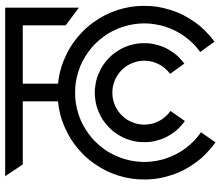Communications in the United States
The primary regulator of communications in the United States is the Federal Communications Commission. It closely regulates all of the industries mentioned below with the exception of newspapers and the Internet service provider industry.

History
The Federal Communications Commission (FCC) is an independent government agency responsible for regulating the radio, television and phone industries. The FCC regulates all interstate communications, such as wire, satellite and cable, and international communications originating or terminating in the United States.
Press
Newspapers declined in their influence and penetration into American households in the late 20th century. Most newspapers are local, having little circulation outside their particular metropolitan area. The closest thing to a national paper the U.S. has is USA Today. Other influential dailies include The New York Times, The Washington Post and The Wall Street Journal which are sold in most U.S. cities.
The largest newspapers (by circulation) in the United States are USA Today, The Wall Street Journal, The New York Times and the Los Angeles Times.
Mail
The legal monopoly of the government-owned United States Postal Service has narrowed during the 20th and 21st centuries due to competition from companies such as UPS & FedEx, although still delivers the vast majority of US mail.
Telephone
Telephone system:
General assessment: A large, technologically advanced, multipurpose communications system.
Domestic: A large system of fiber-optic cable, microwave radio relay, coaxial cable, and domestic satellites carries every form of telephone traffic; a rapidly growing cellular system carries mobile telephone traffic throughout the country.
International: Country code - 1; 24 ocean cable systems in use; satellite earth stations - 61 Intelsat (45 Atlantic Ocean and 16 Pacific Ocean), 5 Intersputnik (Atlantic Ocean region), and 4 Inmarsat (Pacific and Atlantic Ocean regions) (2000).
Landlines
Telephones - main lines in use: 141 million (2009)[1]
- Most of the American telephone system was formerly operated by a single monopoly, AT&T, which was split up in 1984 into a long distance telephone company and seven regional "Baby Bells".
- Landline telephone service continues to be divided between incumbent local exchange carriers and several competing long distance companies. As of 2005, some of the Baby Bells are beginning to merge with long distance phone companies. A small number of consumers are currently experimenting with Voice over Internet Protocol phone service.
- Most local loop service to homes is provided through old-fashioned copper wire, although many of the providers have upgraded the so-called "last mile" to fiber optic.
- Early in the 21st century the number of wire lines in use stopped growing and in some markets began to decline.[2]
Cellular/Wireless communication
Telephones - mobile cellular: 286 million (2009)[1]
- Most states have several competing cellular phone networks.
- The major cellphone companies in the U.S. are Verizon Wireless, AT&T Mobility, Sprint Corporation, and T-Mobile US.
Radio
Radio broadcast stations: AM: 4,669; FM commercial stations: 6,746; FM educational stations: 4,101; FM translators & boosters: 7,253; low-power FM stations: 1,678 (as of December 31, 2016, according to the Federal Communications Commission)
- Most broadcast stations are controlled by large media conglomerates like iHeartMedia. There are also many small independent local stations. National Public Radio (NPR) is the public radio network.
Radios: 575 million (1997)
Television
Television broadcast stations: 7,533 (of which 1,778 are full-power TV stations; 417 are class-A TV stations; 3,789 are TV translators; and 1,966 are other low-power TV stations) (as of December 31, 2016, according to the Federal Communications Commission); in addition, there are about 12,000 cable TV systems.
- Most local commercial television stations are owned-and-operated by or affiliated with the large national broadcast networks such as the American Broadcasting Company (ABC), CBS, the Fox Broadcasting Company (Fox), the National Broadcasting Company (NBC), and The CW Television Network. Some television networks are aimed at ethnic minorities, including Spanish-language networks Univisión and Telemundo. The Public Broadcasting Service (PBS) is the country's main public broadcasting network, with over 300 non-profit affiliated stations across the United States. Besides the large broadcast networks (which are free for anyone with a TV and an antenna), there are also many networks available only with a subscription to cable or satellite television, like CNN.
Televisions: 219 million (1997)
Internet
Internet Service Providers (ISPs): 7,600 (1999 est.)
- Because of aggressive lobbying and the United States' strong libertarian traditions, the Internet service provider industry remains relatively unregulated in comparison to other communications industries.
Country code (Top level domain): US
- For various historical reasons, the .us domain was never widely used outside of a small number of government agencies and school districts. Most companies signed up for top level domains like .com instead.
- NeuStar Inc. now has control over the .us registry and is trying to promote the domain as an option for American-oriented Web sites.
See also
- Big Three television networks
- Cable television in the United States
- Communications in the United States
- Fourth television network
- High-definition television in the United States
- List of television stations in the United States
- List of United States cable and satellite television networks
- List of United States over-the-air television networks
- List of United States television markets
- Satellite television in the United States
- Television in the United States
- Television news in the United States
- United States cable news
.svg.png)